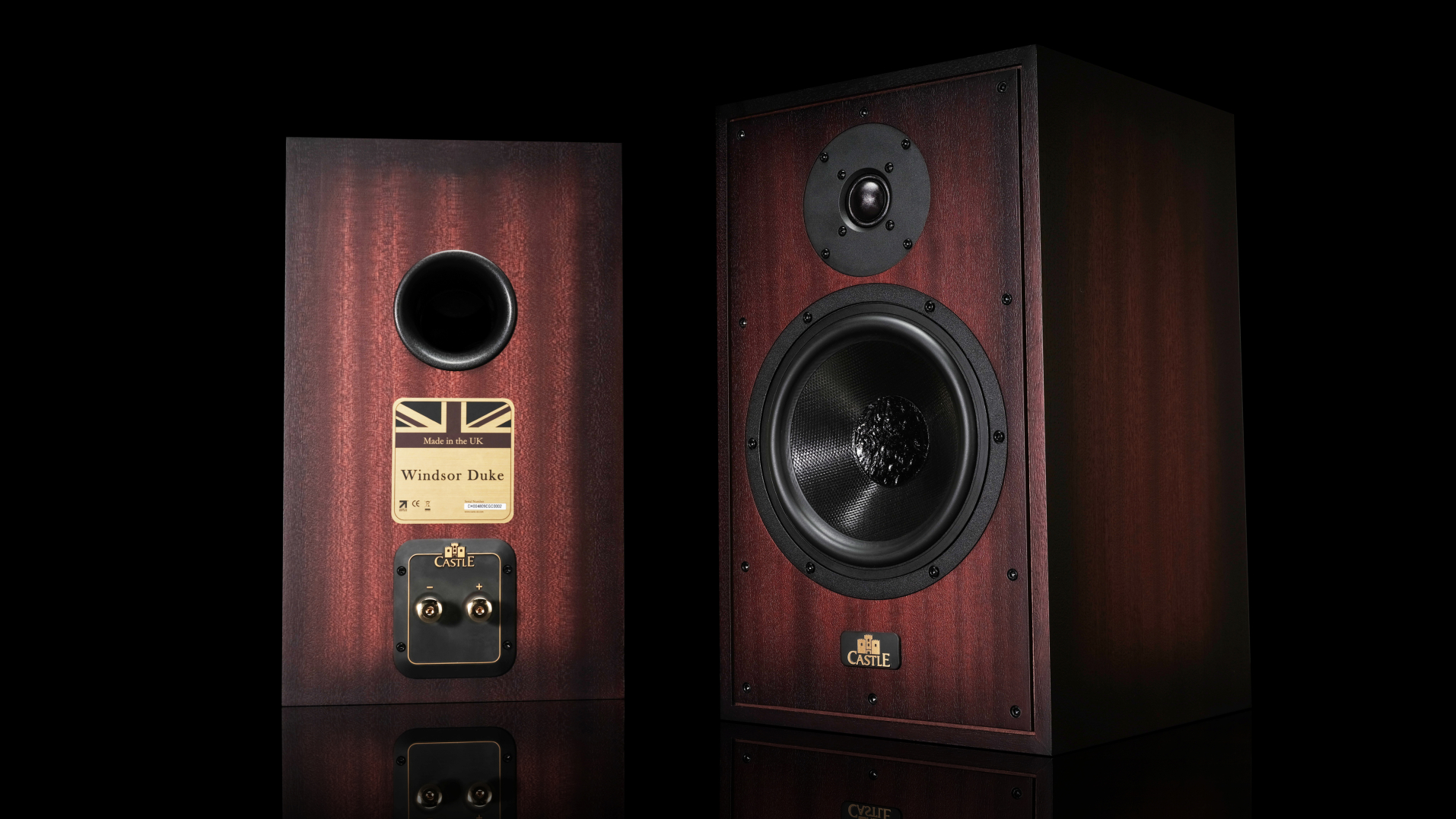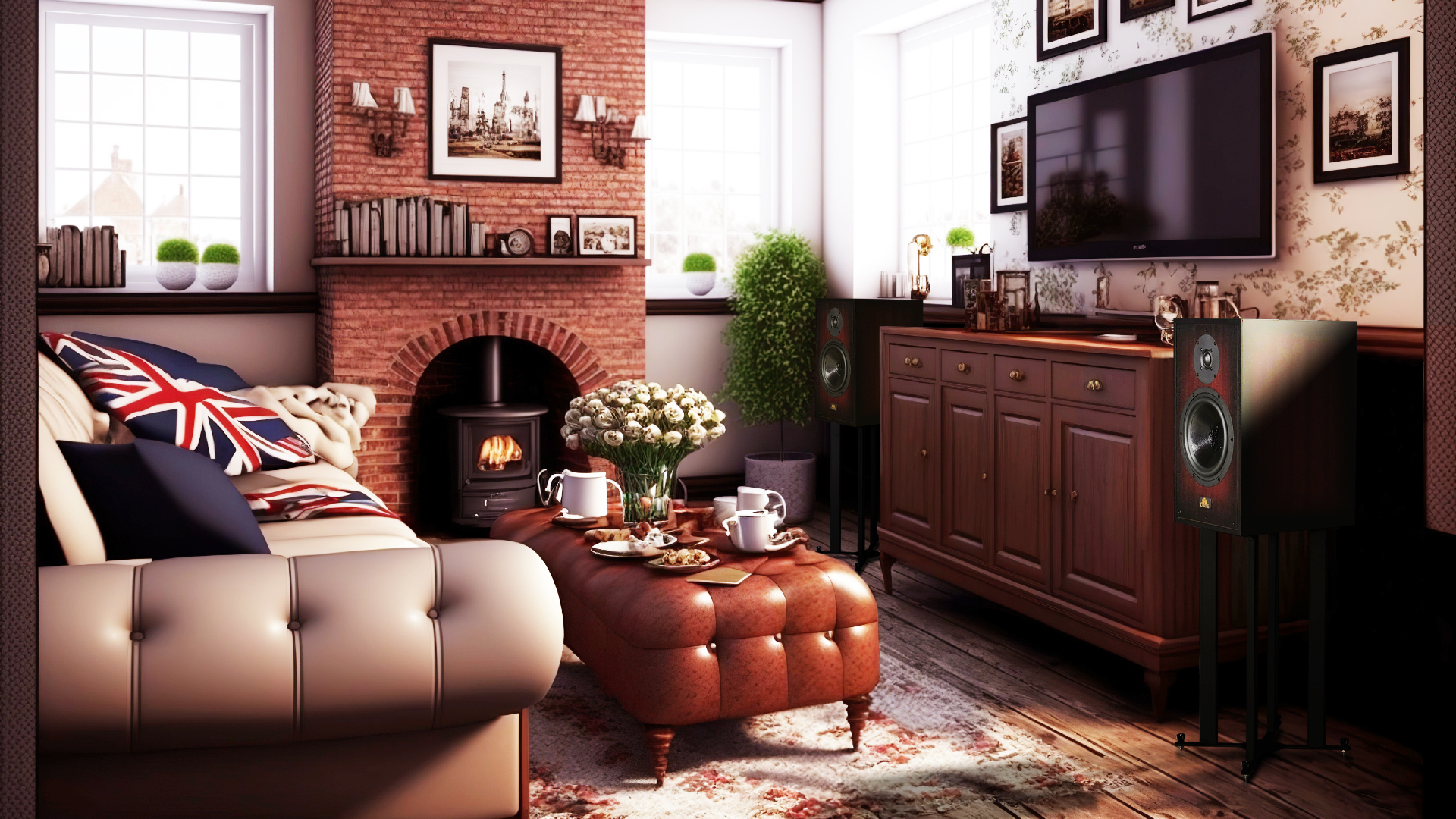Castle’s new mahogany-finish stereo speakers are all the heritage hi-fi I need
Castle's Windsor speakers are a slice of golden era hi-fi

Globular white wireless speakers that talk to each other and ping sound to certain rooms with the wave of your hand (or tap of an app) are lovely, but sometimes I yearn for a simpler time – a time when nothing distracted me from my burgeoning music collection save my parents' landline phone ringing. In which case, it was a mad dash to the receiver against my sister.
Top of my nostalgic wish-list from that time? A pair of the best stereo speakers, and I mean standmount hi-fi speakers – passive wooden boxes that let me remove the grilles to see the cones vibrate as sound waves emerged from them. I'm talking about speakers that required some time and dedication to set up, as well as actual wires and separate pre- and power-amplification.
The Castle Windsor Series takes me back to such a time. Although the range comprises two new pairs of standmount loudspeakers – the Duke and Earl models – Castle has been a revered name in loudspeakers for 50 years. And these are the first Castle speakers for many years to be made entirely in my UK homeland. Add to this the fact that they're designed by one of the most prolific hi-fi speaker brains on the planet, Karl-Heinz Fink – the same Karl-Heinz Fink who gained the Outstanding Contribution Award at the What Hi-Fi? Awards 2022, TechRadar's sister publication (where I cut my teeth as a staff writer) – and I'm all in.
If you live in the UK like me, the Castle Windsor Earl costs £3,850 per pair (£4,250 with stands) while the Windsor Duke are £4,500 (£5,000 with stands).
Globally, the models only ship with stands, and the Windsor Earl is priced at $5,250 / AU$8,000, while the Duke retails for $6,250 / AU$9,250.
Analysis: Castle knows detail is key, with every critical part of the two Windsor models developed in-house

Let's look at the two models: Windsor Earl is slightly smaller than its Windsor Duke speaker pair sibling (above and main image), but both are similar internally, featuring polypropylene-based mid/bass cones – 165mm in the Windsor Earl; 200mm in the Windsor Duke.
However, instead of being produced simply, by forming a foil under a vacuum, the polypropylene is precision-cut into thin strips, woven back into a sort of fabric, and bonded together again to form a solid foil. This foil is pressed into the final shape and cut to size. Why go to all this trouble? This time-consuming method helps minimise resonances, creating a flatter response curve, that's why…
Sign up for breaking news, reviews, opinion, top tech deals, and more.
The mid/bass drivers' magnet system also includes an aluminium compensation ring in a bid to cut down on pesky impedance variations, and the cones' surrounds are made from low-hysteresis rubber which won't deteriorate over time. Also, the voice coils are made from glass fibre bonded with high-temperature resin. This material boasts aluminium-like rigidity without generating the eddy currents aluminium does – yes, it's all about sonic detail and clarity.
The treble unit's voice coil includes a copper cap in a bid to greatly reduce distortion and intermodulation, and the cabinet's MDF panels are even separated by a thin layer of specially-engineered acoustic glue (yes, acoustic glue) to dampen resonance in the midrange.
Look, going back to the 1970s would be wrong – and looking at the new materials and techniques used here, Castle agrees. I'm also a huge fan of musical convenience – I adore Tidal, Apple Music, my old iPod Classic, my Sonos-certified turntable and the Focal Bathys wireless headphones. But there is room in our lives for heritage hi-fi, and it's been a while since a set of speakers excited me more than these options from Castle.
Oh, and while I'm here, it is good to have our own personal handsets now rather than running for the 'rents phone. Although Jo, I'd kill to race you again…

Becky became Audio Editor at TechRadar in 2024, but joined the team in 2022 as Senior Staff Writer, focusing on all things hi-fi. Before this, she spent three years at What Hi-Fi? testing and reviewing everything from wallet-friendly wireless earbuds to huge high-end sound systems. Prior to gaining her MA in Journalism in 2018, Becky freelanced as an arts critic alongside a 22-year career as a professional dancer and aerialist – any love of dance starts with a love of music. Becky has previously contributed to Stuff, FourFourTwo and The Stage. When not writing, she can still be found throwing shapes in a dance studio, these days with varying degrees of success.